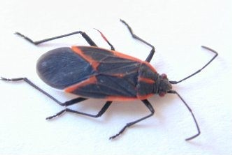Centipedes Scutigera coleoptrata

Centipedes Identification
Color: Yellowish to dark brown, sometimes with darker stripes or markings
Size: 1/8 – 6” (4-152 mm)
Legs: 15 - 177 pairs
Antennae: Yes
Shape: Elongated, flattened, worm-like
Region: Found throughout U.S.
What is a Centipede?
Centipedes are sometimes called house centipedes or "hundred-leggers" because of their many pairs of legs. They are widely distributed throughout most of United States and the world. Centipedes are rarely seen by humans due to their nocturnal activity and the speed in which they move. Most centipedes live for more than a year and some up to six years. Read on to learn more centipede facts.
What do centipedes look like?
House centipedes are easy to spot by their elongated, worm-like body with their many pairs of legs. They can actually have anywhere from 15-177 pairs of legs with one pair per segment, depending on the species. Interestingly, centipedes always have an odd number of pairs of legs.
In general, the body of a centipede is usually yellowish to dark brown in color, sometimes with darker stripes or markings. The heads of centipedes have a pair of long and sensitive antennae covered with dense hairs. They have small mouths and have large, claw-like structures that contain a venom gland. In fact, some centipedes have compound eyes containing as many as 200 optical units, while others have a cluster of simple eyes on each side of the hear or no eyes.
There are two representative species. The usual pest species is the common house centipede Scutigera coleoptrata (Linnaeus). This centipede is about 1-1 1/2” (25-38 mm) long. Its body is grayish yellow with three longitudinal dark stripes. The house centipede has 15 pairs of long legs. The antennae and last pair of legs are longer than its body. The largest centipedes are in the genus Scolopendra and may grow to as much as 6” (15 cm) long. Their legs and antennae are shorter than those of the house centipede.
Centipedes typically overwinter outdoors in protected situations and lay their eggs during the summer, usually in or on the soil. Females of Scutigera have been known to produced 35 eggs over a period of days.
Centipedes are found in areas of high moisture, such as loose bark, in rotting logs, under stones, in trash or piles of leaves and grass. When they invade homes, centipedes are most commonly found in damp basements, crawlspaces, bathrooms or potted plants.
All centipedes have very poor eyesight and track their prey through the use of touch and smell. Centipedes are primarily carnivorous and obtain most of their moisture needs from their prey Most house centipedes are nocturnal, and prey primarily on flies, spiders and sometimes plant tissue, causing injury. Centipedes are not likely to consume wood. In actuality, arthropods commonly known as wood eating centipedes are millipedes. While millipedes do closely resemble centipedes, millipedes are herbivores and detritivores, surviving on dead and decaying plant material, including wood or cellulose material.
Centipedes are found throughout the United States and the world. They are typically found in areas of high moisture, such as in rotting logs, under stones, in trash or piles of leaves/grass. When they invade homes, centipedes are most commonly found in damp basements, crawlspaces, bathrooms, or potted plants.
Centipedes are generally considered nuisance pests, as they do not pose significant health or property threats. However, all house centipedes have poison jaws with which they inject venom into their prey.
If handled roughly, some larger species can inflict a painful bite that can break human skin and cause pain and swelling, similar to a bee sting. The large Scolopendra can inflict a very painful bite and should be handled with great care.
Centipedes typically leave no direct signs of an infestation other than the sighting of the pest itself.
The most effective way to prevent a centipede infestation is to reduce areas of moisture in and around your home. Remove piles of leaves and grass clippings, logs, stones and rocks on your property. Store firewood off the ground. Provide adequate ventilation in basements, attics and crawl spaces. Seal holes, cracks and gaps that enable outdoor centipedes to get inside a home.
If a centipede is found indoors, you can get rid of it with a vacuum. However, you should contact a licensed pest professional if you suspect an infestation. You can find one near you with the helpful zip code search below.



